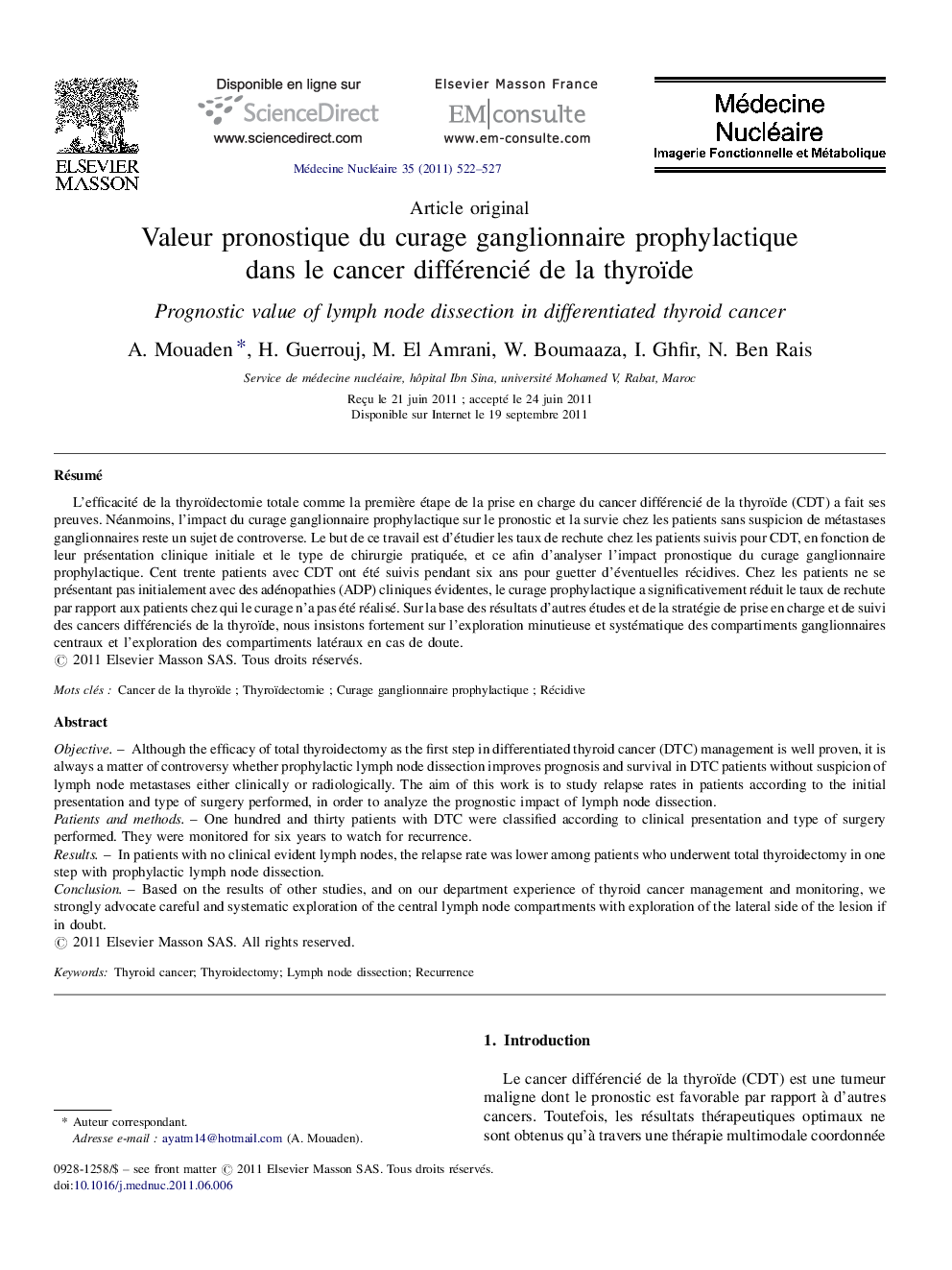| Article ID | Journal | Published Year | Pages | File Type |
|---|---|---|---|---|
| 4244206 | Médecine Nucléaire | 2011 | 6 Pages |
RésuméL’efficacité de la thyroïdectomie totale comme la première étape de la prise en charge du cancer différencié de la thyroïde (CDT) a fait ses preuves. Néanmoins, l’impact du curage ganglionnaire prophylactique sur le pronostic et la survie chez les patients sans suspicion de métastases ganglionnaires reste un sujet de controverse. Le but de ce travail est d’étudier les taux de rechute chez les patients suivis pour CDT, en fonction de leur présentation clinique initiale et le type de chirurgie pratiquée, et ce afin d’analyser l’impact pronostique du curage ganglionnaire prophylactique. Cent trente patients avec CDT ont été suivis pendant six ans pour guetter d’éventuelles récidives. Chez les patients ne se présentant pas initialement avec des adénopathies (ADP) cliniques évidentes, le curage prophylactique a significativement réduit le taux de rechute par rapport aux patients chez qui le curage n’a pas été réalisé. Sur la base des résultats d’autres études et de la stratégie de prise en charge et de suivi des cancers différenciés de la thyroïde, nous insistons fortement sur l’exploration minutieuse et systématique des compartiments ganglionnaires centraux et l’exploration des compartiments latéraux en cas de doute.
ObjectiveAlthough the efficacy of total thyroidectomy as the first step in differentiated thyroid cancer (DTC) management is well proven, it is always a matter of controversy whether prophylactic lymph node dissection improves prognosis and survival in DTC patients without suspicion of lymph node metastases either clinically or radiologically. The aim of this work is to study relapse rates in patients according to the initial presentation and type of surgery performed, in order to analyze the prognostic impact of lymph node dissection.Patients and methodsOne hundred and thirty patients with DTC were classified according to clinical presentation and type of surgery performed. They were monitored for six years to watch for recurrence.ResultsIn patients with no clinical evident lymph nodes, the relapse rate was lower among patients who underwent total thyroidectomy in one step with prophylactic lymph node dissection.ConclusionBased on the results of other studies, and on our department experience of thyroid cancer management and monitoring, we strongly advocate careful and systematic exploration of the central lymph node compartments with exploration of the lateral side of the lesion if in doubt.
